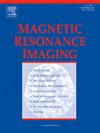基于多参数MRI结合放射组学和深度学习预测乳腺癌Ki-67表达的研究。
IF 2
4区 医学
Q2 RADIOLOGY, NUCLEAR MEDICINE & MEDICAL IMAGING
引用次数: 0
摘要
目的:建立多参数乳腺MRI放射组学和基于深度学习的多模态模型,预测乳腺癌患者术前Ki-67表达状态,为乳腺癌患者的个体化治疗和精准医疗提供依据。方法:我们纳入176例行乳腺MRI检查并Ki-67结果的浸润性乳腺癌患者。数据集随机分为训练集(70 %)和测试集(30 %)。融合了t1加权成像(T1WI)、弥散加权成像(DWI)、t2加权成像(T2WI)和动态对比增强MRI (DCE-MRI)的特征。每个序列分别建立模型:T1、DWI、T2和DCE。然后通过结合所有序列的特征建立多参数MRI (mp-MRI)模型。采用五重交叉验证对模型进行训练,并以受试者工作特征(ROC)曲线下面积(AUC)、准确性、敏感性、特异性、阳性预测值、阴性预测值和F1评分对测试集进行评估。Delong的检验将mp-MRI模型与其他模型进行了比较,P值为 结果:五种模型均表现出良好的性能,T1模型的auc为0.83,DWI模型为0.85,T2模型为0.90,DCE模型为0.92,mp-MRI模型为0.96。Delong的检验显示mp-MRI模型与其他四种模型的差异有统计学意义,P值为 结论:多参数乳腺MRI放射组学和基于深度学习的多模态模型在预测乳腺癌术前Ki-67表达状态方面有较好的效果。本文章由计算机程序翻译,如有差异,请以英文原文为准。
Study on predicting breast cancer Ki-67 expression using a combination of radiomics and deep learning based on multiparametric MRI
Purpose
To develop a multiparametric breast MRI radiomics and deep learning-based multimodal model for predicting preoperative Ki-67 expression status in breast cancer, with the potential to advance individualized treatment and precision medicine for breast cancer patients.
Methods
We included 176 invasive breast cancer patients who underwent breast MRI and had Ki-67 results. The dataset was randomly split into training (70 %) and test (30 %) sets. Features from T1-weighted imaging (T1WI), diffusion-weighted imaging (DWI), T2-weighted imaging (T2WI), and dynamic contrast-enhanced MRI (DCE-MRI) were fused. Separate models were created for each sequence: T1, DWI, T2, and DCE. A multiparametric MRI (mp-MRI) model was then developed by combining features from all sequences. Models were trained using five-fold cross-validation and evaluated on the test set with receiver operating characteristic (ROC) curve area under the curve (AUC), accuracy, sensitivity, specificity, positive predictive value, negative predictive value, and F1 score. Delong's test compared the mp-MRI model with the other models, with P < 0.05 indicating statistical significance.
Results
All five models demonstrated good performance, with AUCs of 0.83 for the T1 model, 0.85 for the DWI model, 0.90 for the T2 model, 0.92 for the DCE model, and 0.96 for the mp-MRI model. Delong's test indicated statistically significant differences between the mp-MRI model and the other four models, with P values < 0.05.
Conclusions
The multiparametric breast MRI radiomics and deep learning-based multimodal model performs well in predicting preoperative Ki-67 expression status in breast cancer.
求助全文
通过发布文献求助,成功后即可免费获取论文全文。
去求助
来源期刊

Magnetic resonance imaging
医学-核医学
CiteScore
4.70
自引率
4.00%
发文量
194
审稿时长
83 days
期刊介绍:
Magnetic Resonance Imaging (MRI) is the first international multidisciplinary journal encompassing physical, life, and clinical science investigations as they relate to the development and use of magnetic resonance imaging. MRI is dedicated to both basic research, technological innovation and applications, providing a single forum for communication among radiologists, physicists, chemists, biochemists, biologists, engineers, internists, pathologists, physiologists, computer scientists, and mathematicians.
 求助内容:
求助内容: 应助结果提醒方式:
应助结果提醒方式:


